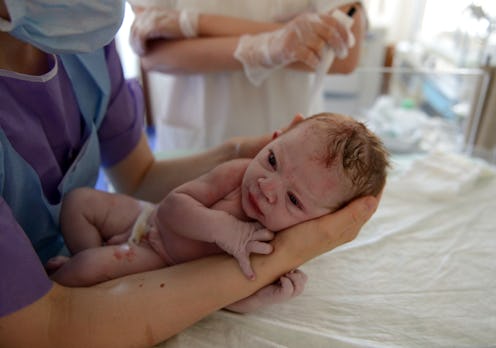News
World Health Organization Offers C-Section Warning
The world's foremost international health body has issued some new words of caution about a common surgical procedure, one that could be relevant for any of you parents-to-be out there — the World Health Organization warned against unnecessary C-sections, insisting they should only be performed when medically justified, due to the health risks that the procedure can pose.
For the uninitiated, a C-section (short for caesarean section) is a procedure in which a newborn baby is surgically extracted through the abdomen and uterus. It represents a huge advancement in reproductive health care, as compared to the pre-caesarean days — when used properly, they're a means of avoiding dangerous complications from vaginal births, lessening risks to the lives of both mother and child.
But, as detailed in the WHO's report on C-sections published Friday, there are also risks associated with unnecessary use of C-section, and by the numbers the United States is well past the ideal threshold. Basically, according to the WHO, the ideal rate of C-section births is right around ten percent — when you get closer to that rate, child and mother mortality rates decrease. But when the rate rises above ten percent and higher, they're not finding any further improvements in mortality rate. Here's their warning, which was included in their full report Friday.
Caesarean sections can cause significant and sometimes permanent complications, disability or death particularly in settings that lack the facilities and/or capacity to properly conduct safe surgery and treat surgical complications. Caesarean sections should ideally only be undertaken when medically necessary.
So, what is the C-section rate here in the United States, you ask? As detailed by Time's Alexandra Sifferlin, America clocks in at 33 percent according to the WHO's data, more than three times the level they've found effective. Here's how the WHO put it themselves.
Based on the WHO systematic review, increases in caesarean section rates up to 10-15% at the population level are associated with decreases in maternal, neonatal and infant mortality. Above this level, increasing the rate of caesarean section is no longer associated with reduced mortality.
Furthermore, the report casts some general doubt on just how directly C-sections affect mortality rates, chalking up "a substantial part" of the effect to differing socioeconomic conditions.
However, the association between higher rates of caesarean section and lower mortality weakened or even disappeared in studies that controlled for socioeconomic factors. Since it is likely that socioeconomic factors can explain most of the association between increased caesarean section rates and lower mortality in this review, WHO conducted another study to further analyse this aspect. ... The WHO worldwide ecologic study found that a substantial part of the crude association between caesarean section rate and mortality appears to be explained by socioeconomic factors.
In other words: the WHO doesn't want you to get a C-section unless you have a justifiable medical need for one, because it's possible they're being overused in a big way — potentially hazardously so.
Image: Getty Images
